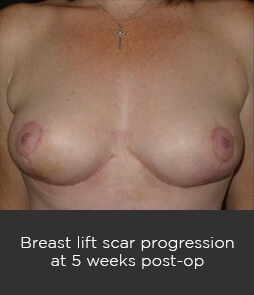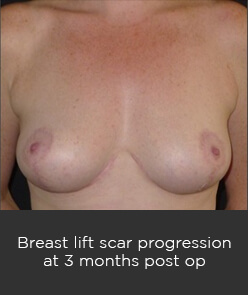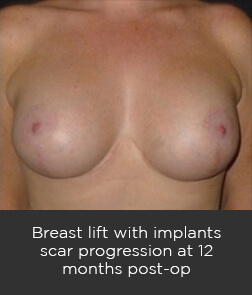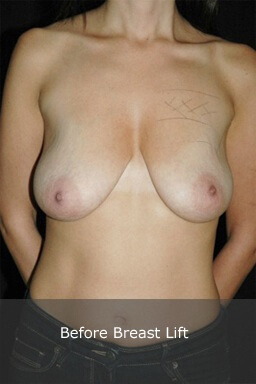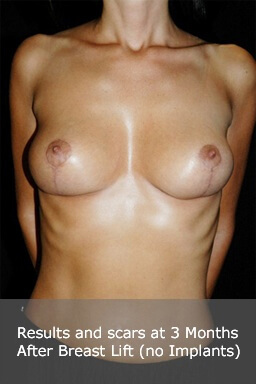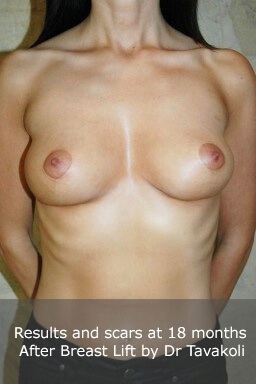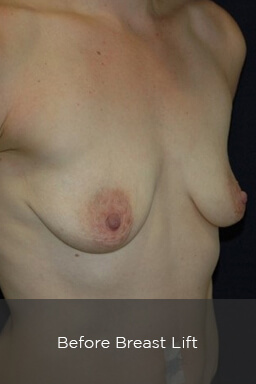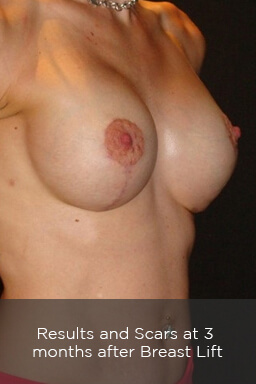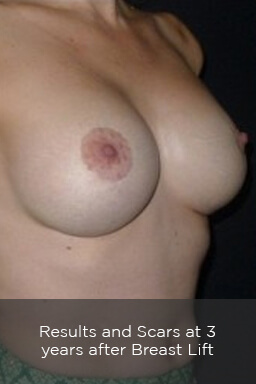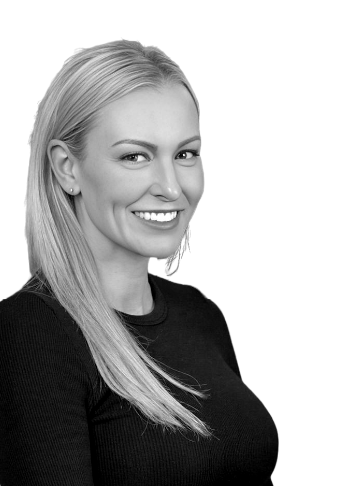Australia’s registered plastic surgeon with experience in:
- Breast Augmentation Mammoplasty & Recovery Technique
- Complicated Breast Revision Surgery & Internal Bra System
- Tuberous Breasts & Breast Asymmetry Corrections
- Comprehensive Understanding in Fat Grafting Technique
What is a Breast lift surgery / Mastopexy?
A breast lift or mastopexy is designed to change the shape and position of the breasts without reducing their size. This is usually for breasts that have some degree of laxity but are not necessarily too large. Laxity of the breasts may occur with normal development for some women or as part of ageing. Pregnancy, breast-feeding, and weight loss are other conditions which increase breast ptosis. Some patients will have a better shape to their breast if an implant is used at the time of mastopexy, and this option can be discussed during a consultation.
It is becoming increasingly clear to plastic surgeons that simply using breast implants alone will not always produce aesthetically acceptable results. In assessing breast geometry and design, the plastic surgeon must consider four crucial parameters:
- Breast shape
- Breast size
- Nipple-areolar position
- Skin elasticity and stretch marks
Breast ptosis is a condition that affects women of all ages. Although we tend to associate breast ptosis with old age, young girls after significant weight loss or post-breast-feeding are often faced with varying degrees of this.
Although a breast augmentation mammoplasty with implants can, to some extent, rectify concerns about breast volume, the issues relating to nipple position and excessive skin envelope cannot be addressed. This means augmentation mammoplasty is usually left for very mild cases of breast ptosis, as per the examples below.
Disclaimer: The outcomes shown are only relevant for this patient and do not necessarily reflect the results other patients may experience, as results may vary due to many factors including the individual’s genetics, diet and exercise.
GREEN ZONE: Deflated
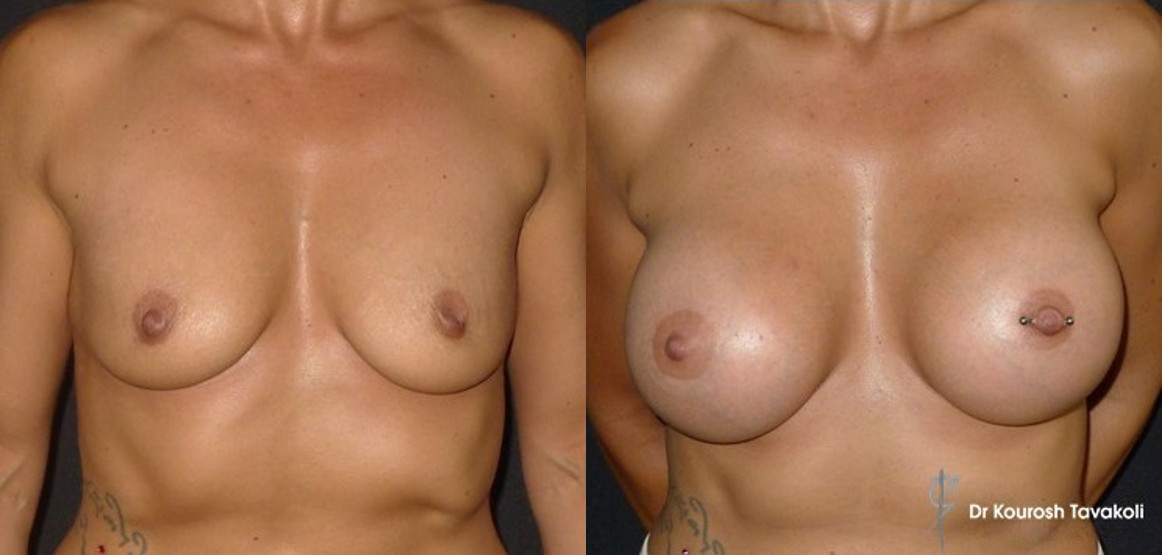
GREEN ZONE:
Bilateral primary breast augmentation mammoplasty to correct mild ptosis and deflation. Mentor CPG 323-345cc inserted to create maximum lift without mastopexy.
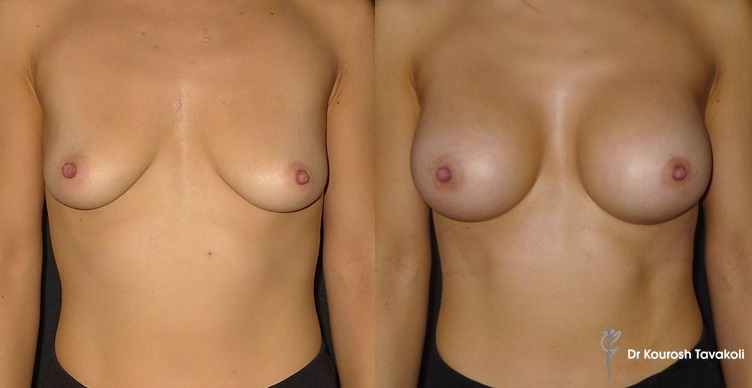
YELLOW ZONE:
Borderline’ cases (Mild ptosis of the breast which can be lifted with breast augmentation mammoplasty, no mastopexy required).
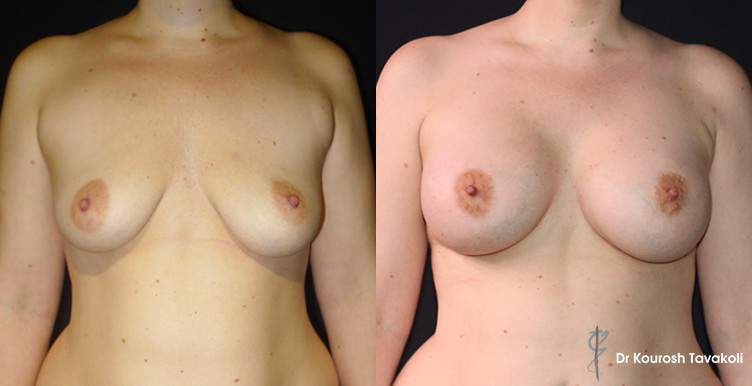
YELLOW ZONE:
Bilateral breast augmentation mammoplasty to correct ptosis using Mentor CPG 333 485cc implants.
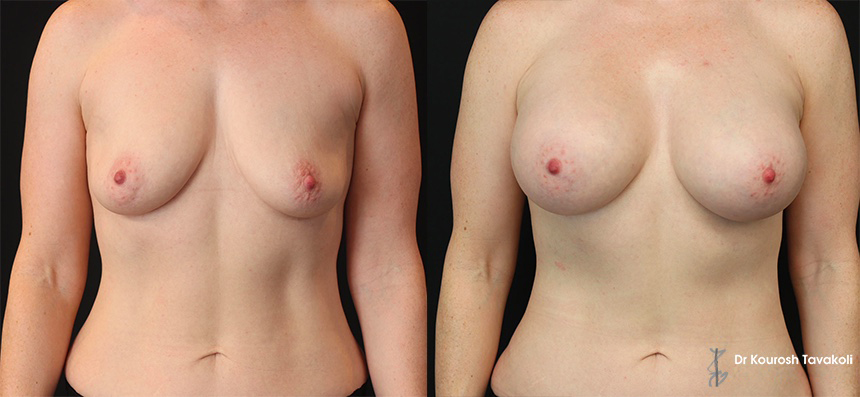
YELLOW ZONE:
Bilateral breast augmentation mammoplasty to correct ptosis. Submuscular placement of Mentor CPG 333 545cc implants.
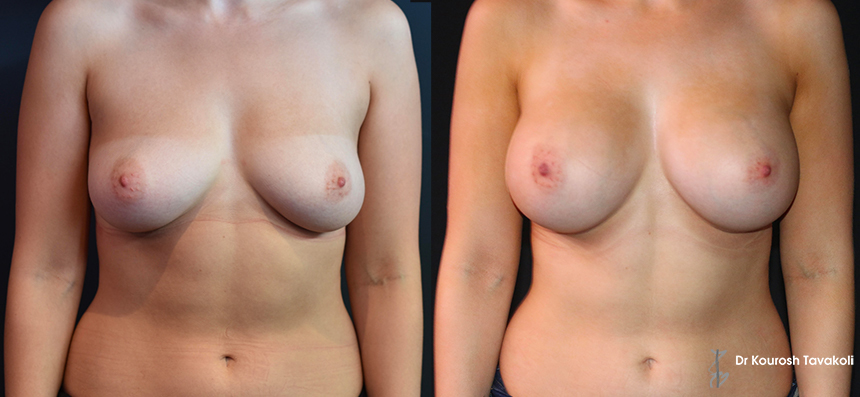
YELLOW ZONE:
Bilateral breast augmentation mammoplasty using Mentor CPG 333 330cc high profile implants.
Disclaimer: The outcomes shown are only relevant for this patient and do not necessarily reflect the results other patients may experience, as results may vary due to many factors including the individual’s genetics, diet and exercise.
RED ZONE: Clear cut laxity requiring mastopexy and augmentation mammoplasty
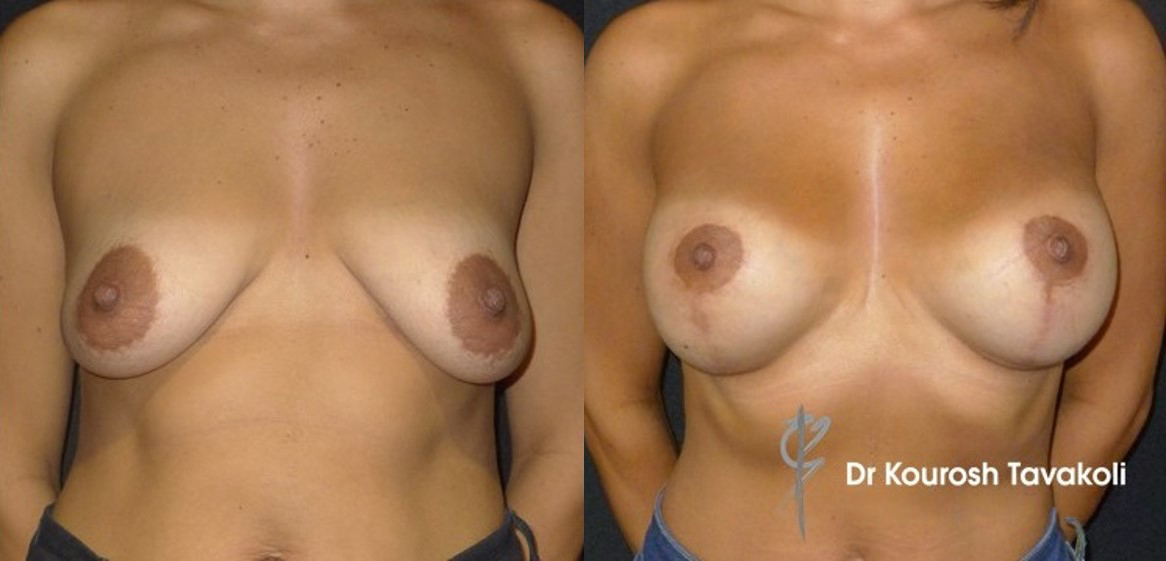
Red zone:
Bilateral primary breast augmentation mammoplasty and mastopexy to correct severe ptosis. Mentor Siltex moderate plus 300cc inserted following mastopexy to create maximum lift.
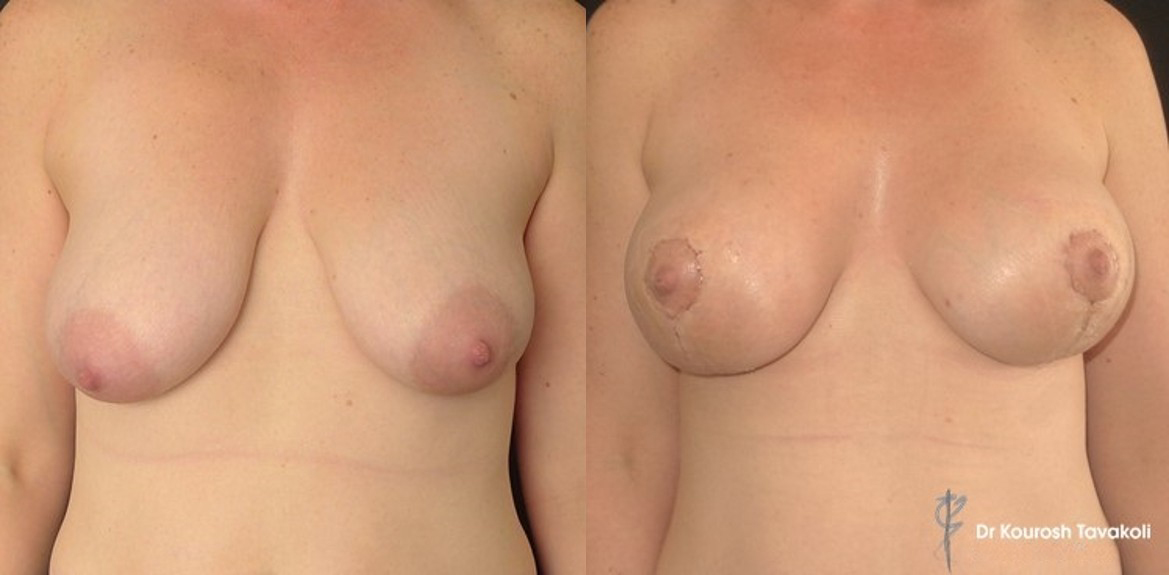
Red zone:
Bilateral primary breast augmentation mammoplasty and mastopexy to correct severe ptosis. Mentor Siltex Round UHP 250cc inserted following mastopexy to create a lift.
Disclaimer: The outcomes shown are only relevant for this patient and do not necessarily reflect the results other patients may experience, as results may vary due to many factors including the individual’s genetics, diet and exercise.
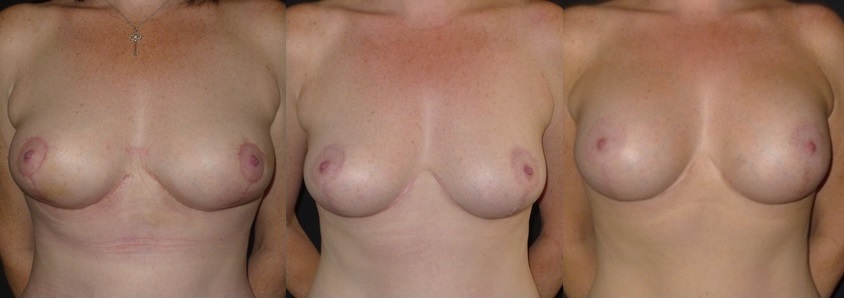
Two-stage breast mastopexy and augmentation mammoplasty.
Disclaimer: The outcomes shown are only relevant for this patient and do not necessarily reflect the results other patients may experience, as results may vary due to many factors including the individual’s genetics, diet and exercise.
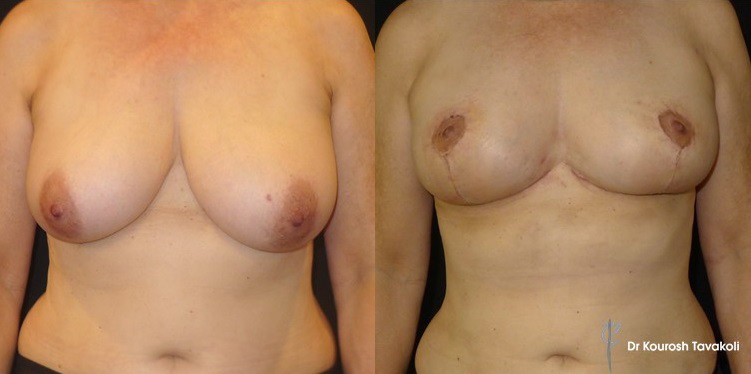
Bilateral breast reduction mammoplasty and fat grafting to upper pole.
The Procedure
Breast ptosis can be classified according to the position of the breast and nipple in relation to breast fold:
1. Grade 1: Breast is below fold, nipple-areola at fold
2. Grade 2: Breast is below fold, nipple-areola is also below fold
3. Grade 3: Nipple-areola pointing to the floor
Breast lift surgery or Mastopexy is therefore designed to alter the breast shape in three ways:
1. Grade 1: Breast is below fold, Nipple-areola at fold
2. Grade 2: Breast is below fold, Nipple-areola is also below fold
3. Grade 3: Nipple-areola pointing to the floor
Although mastopexy does not change the amount of breast tissue a woman has, it can change the shape dramatically. This in turn can affect the overall breast size and projection. However, there are many cases where breast lifting (mastopexy) needs to be combined with a breast implant to produce a desirable breast size. The combined breast lift-augmentation (mastopexy/mammoplasty) is considered one of the more difficult operations in plastic surgery. It can be performed in either one stage or more commonly in two stages.
Modern plastic surgery attempts to minimise scars, but scarring is inevitable. The prospective patient should be aware of this delicate balance prior to embarking on this procedure and understand that outcomes may vary.
Disclaimer: The outcomes shown are only relevant for this patient and do not necessarily reflect the results other patients may experience, as results may vary due to many factors including the individual’s genetics, diet and exercise.
Scarring after breast lift mastopexy
The degree of scarring can vary depending on the individual and the technique used. Most patients embarking on breast enhancement fear poor scarring that may arise from this procedure. Hence there are instances where Dr Tavakoli would initially recommend the use of breast implants and adopt the wait and see approach. The quality of the breast lift mastopexy scar can depend on the patient’s own healing power.
Clinical Sequence:
BREAST LIFT MASTOPEXY COSTS IN SYDNEY
The cost of a breast lift mastopexy procedure can vary depending on several factors, including the duration of the surgery and whether it is part of a broader package that involves other surgeries. To provide an accurate cost for your surgery, we will discuss your motivations for the surgery and your desired outcomes, and consider personal factors such as your body type and health history.
We will discuss all of these factors during a consultation, which not only allows us to provide you with an accurate cost, but it also gives you an opportunity to ask any questions you may have and feel more confident about the procedure. During your consultation, we can discuss whether a breast lift procedure can be combined with an augmentation or reduction, if desired. If you combine the procedures, this will also influence your total surgery costs.
Although we cannot provide a detailed quote without speaking with you directly, we can break down the different cost components of your surgery to give you an idea of what to expect:
Your procedure fees will cover the costs for:
- – The surgical team
- – The anaesthetist
- – Our state-of-the-art facilities
- – Our high-quality equipment
- – Comprehensive after-care and consultation
Our clinic is equipped with the latest technology to ensure the best possible outcomes for our patients. Our after-care program is also comprehensive, with in-depth communication and assessment sessions to ensure your full recovery.
Your initial consultation and quote are completely free of charge and obligation.
SURGERY RISKS AND COMPLICATIONS
Breast lift mastopexy surgery, like any surgical procedure, comes with potential risks and complications. Surgical risks and complications may include infection, bleeding, asymmetry, keloid scarring, and nerve damage. Damage to the blood supply of the nipple-areolar complex, although uncommon, can occur.
Breast lift mastopexy surgery may also result in changes in nipple or breast sensation, which can be temporary or permanent. There is a risk of asymmetry after breast lift mastopexy surgery, where one breast may appear higher or lower than the other, but techniques will be put in place to avoid this.
Breast lift mastopexy surgery may impact breastfeeding ability, although this is generally not a significant concern. You can discuss this during your consultation if you plan on having children in the future. As with any surgical procedure, there are risks associated with anaesthesia, which can also be discussed during your consultation.
Having a clear understanding of your personalised preparation and recovery advice will also help you to greatly minimise some of these risks.
Undergoing a breast lift mastopexy in Sydney
Having a breast lift mastopexy is an invasive surgical operation that requires the skills and experience of a qualified surgeon. Don’t make the mistake of simply walking into any of the number of surgical clinics in the country and expect the best possible results. Do your research and make the best out of the consultation process.
More importantly, patients need to make sure that their breast surgeon has the necessary qualifications and board certifications. Follow up on references and verify with the certifying body that your surgeon does indeed have the credentials and qualifications to perform the procedure safely and effectively.
Get in touch with us on 1300 368 107 to arrange a consultation in Sydney or Double Bay.

